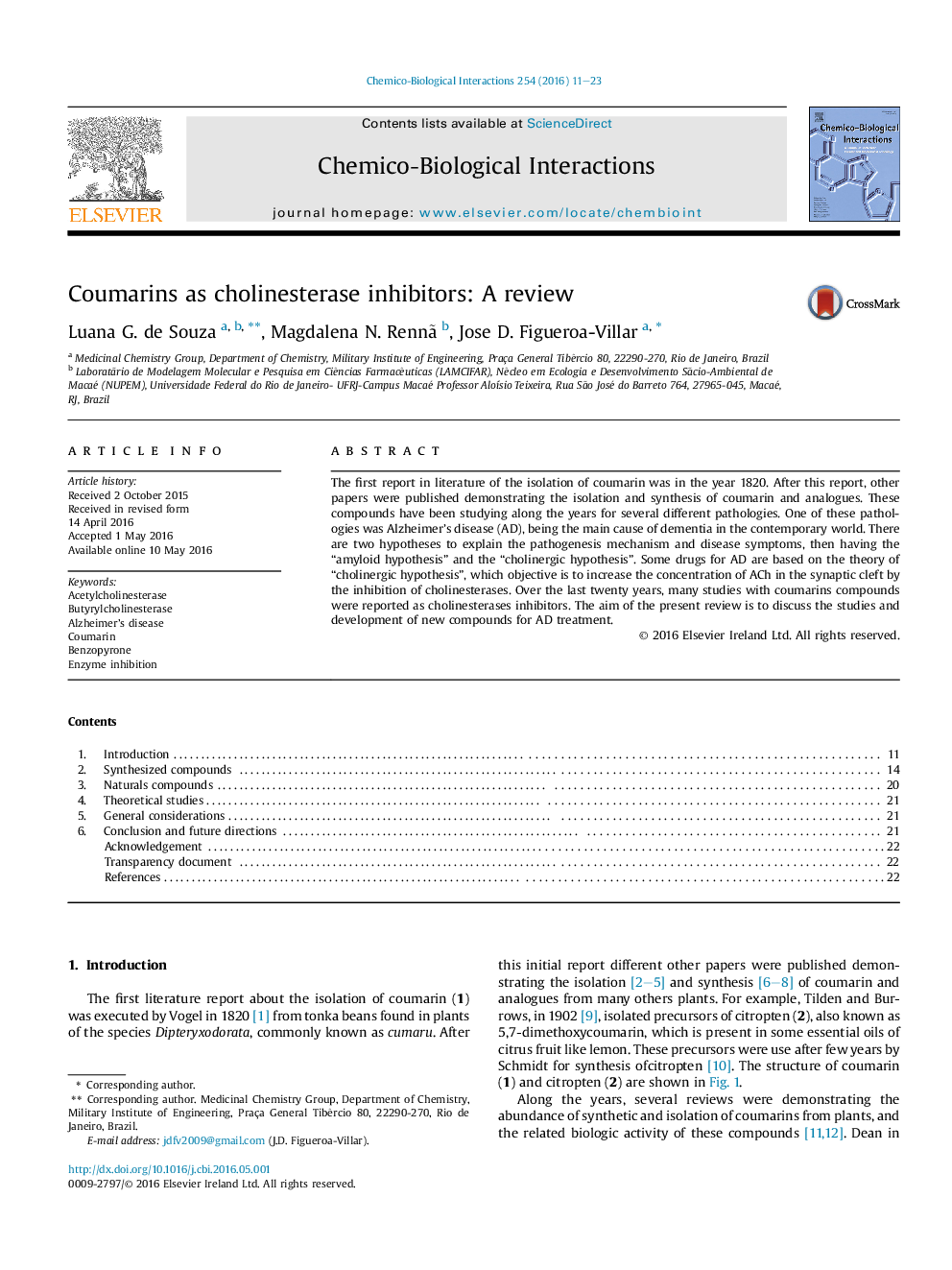| Article ID | Journal | Published Year | Pages | File Type |
|---|---|---|---|---|
| 2579810 | Chemico-Biological Interactions | 2016 | 13 Pages |
•Synthesized and natural compounds derived from coumarin with in vitro anti-cholinesterase activity.•The substituent attached to coumarin seems to decide its selectivity towards a special target.•Coumarins with many chemical substitutions in several sites in this structural nucleus.
The first report in literature of the isolation of coumarin was in the year 1820. After this report, other papers were published demonstrating the isolation and synthesis of coumarin and analogues. These compounds have been studying along the years for several different pathologies. One of these pathologies was Alzheimer’s disease (AD), being the main cause of dementia in the contemporary world. There are two hypotheses to explain the pathogenesis mechanism and disease symptoms, then having the “amyloid hypothesis” and the “cholinergic hypothesis”. Some drugs for AD are based on the theory of “cholinergic hypothesis”, which objective is to increase the concentration of ACh in the synaptic cleft by the inhibition of cholinesterases. Over the last twenty years, many studies with coumarins compounds were reported as cholinesterases inhibitors. The aim of the present review is to discuss the studies and development of new compounds for AD treatment.
Graphical abstractFigure optionsDownload full-size imageDownload as PowerPoint slide
